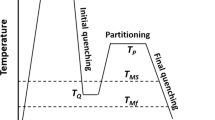Abstract
Generation IV reactors are being developed to produce a reliable energy safely and with an economic benefit, because nuclear energy is being seriously considered to meet the increasing demand for a world-wide energy supply without environmental effects. Ferritic/martensitic steels are attracting attention as candidate materials for the Gen-IV reactors due to their high strength and thermal conductivity, low thermal expansion, and good resistance to corrosion. In recent years, new ferritic/martensitic steels have been developed for ultra supercritical fossil power plants through advanced technologies for steel fabrication. The microstructural stability of these materials for the pressure vessel, cladding and core structure of the VHTR and SFR is very important. Nitrogen is a precipitation hardening element, and the thermal stability of nitrides is superior to that of carbides. So the formation of nitrides may improve the thermal stability of the microstructure and eventually increase the creep rupture strength of high Cr steels. The effect of nitrogen on the creep rupture strength and microstructure evolution of nitrogen-added Mod.9Cr-1Mo steels has been studied. Creep testing was carried out at 873 and 923 K under constant load conditions. The optimum controlled Cr2X precipitates were developed by special heat treatment, and they were not dissolved after a creep deformation. These fine and stable Cr2X precipitates contributed to the increase of the creep rupture strength. The prior austenite grain size and martensite lath width were decreased by the resultant stable nitrides.
Similar content being viewed by others
References
Pitner A L, Hecht S L and Trenchard R G, WHC-SA-1967-FP (1993).
Ehrlich K and Kelzenberg S, Rohrig H D, Schafer L and Schirra M, J. Nucl. Mater. 212–215, (1994) 678.
Butterworth G J, Tupholme K W, Orr J and Dulieu D, CLMR264 (1986).
Abe F, Igarashi M, Wanikawa S, Tabuchi M, Itagaki T, Kimura K and Yamaguchi K, Conf. on Parsons 2000 Advanced Materials for 21st century Turbines and Power Plant, Churchill college, Cambridge, UK, July 3, 2000, The Institute of Materials, Cambridge, 2000.
W-S Ryu, Song B J, Kim S H and Chang J, Conf. on ICAPP’ 05, Seoul, Korea, 2005.
Kim S H, Song B J, W-S Ryu and Hong J H, J. Nucl. Mater. 329–333, (2004) 299.
Pickering F B, Conf. on Microstructural Development and Stability in High Chromium Ferritic Power Plant Steels, Robinson College, Cambridge, UK, June 30, 1995, The Institute of Materials, Cambridge, 1997.
Robson J D and Bhadeshia H K D H, Conf. on Microstructural Stability of Creep Resistant Alloys for High Temperature Plant Applications, Sheffield Hallam Uni., Sheffield, UK, Mar. 24–26, 1997, The Institute of Materials, Cambridge, 1998.
Eggeler G, Hald J, Cans M and Phillips J, in: Pro. 5th Int. Conf. on Creep and Fracture of Engineering Materials and Structures, University College Swansea, Swansea, UK, Mar. 28–Apr. 2, 1993, The Institute of Materials, London, 1993.
Author information
Authors and Affiliations
Corresponding author
Rights and permissions
About this article
Cite this article
Ryu, W.S., Kim, S.H. Thermal treatment improving creep properties of nitrogen-added Mod.9Cr-1Mo steels. Trans Indian Inst Met 63, 111–115 (2010). https://doi.org/10.1007/s12666-010-0015-z
Received:
Revised:
Accepted:
Published:
Issue Date:
DOI: https://doi.org/10.1007/s12666-010-0015-z




